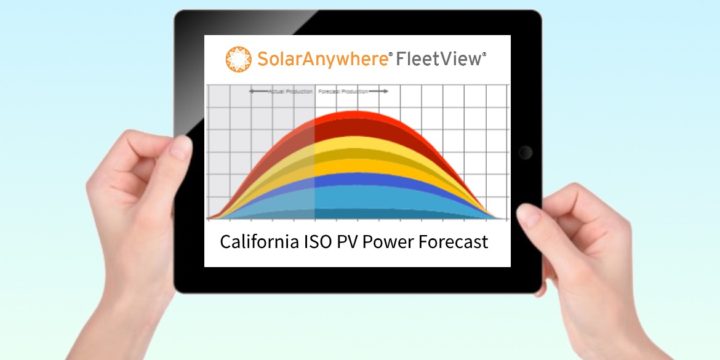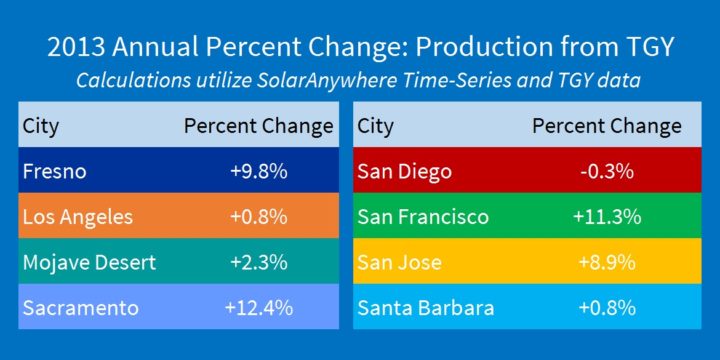If you stopped by the Clean Power Research booth (#118) at the most recent Solar Power International (SPI) Conference in Las Vegas, you would have noticed a tall metal frame supporting some measurement equipment. While this structure could have passed for a new-age...
Author:
SolarAnywhere Posts
Solar fleet modeling part 3: Balancing the variability of PV
In our previous two posts, we described how to incorporate PV diversity (diversity in both design configuration and geography) in fleet-level modeling, and how to generate high frequency fleet power data with 60-second temporal resolution. In this post, we will show...
Planning for solar part 2: High frequency data
Our previous post discussed how to produce solar PV production profiles for fleets of PV systems. In it we highlighted the importance of including both system diversity (tilt, orientation, shading, etc.), and geographical diversity (system locations and relative...
Planning for solar part 1: Solar fleet modeling
With the proliferation of grid-connected solar—whether from a few large, utility-scale systems, or from thousands of small, behind-the-meter systems—utilities are grappling with integration of these distributed, variable power generation resources. Over the next three...
When it comes to understanding solar resource risk, not all datasets are created equal
When it comes to ensuring that solar investments live up to power-production expectations, one important element is understanding the uncertainty of the solar resource. The lower the uncertainty of the background solar resource, the higher the likelihood a solar...
Intersolar North America 2014: The year of O&M and bankability
I often hear complaints that solar tradeshows aren’t offering much that is new and exciting—but I beg to differ. Every year I see trends emerging—trends that are often overlooked until months after the show. Intersolar North America was no exception. This year I was...
CSI RD&D project results: Forecasting behind-the-meter PV for the California ISO
In a recent NREL report, interviews of 13 operating entities in the Western Interconnection found that “Variable generation (VG) forecasting is widely considered to be a key means of integrating wind and solar power efficiently and reliably as these resources become...
Just how great was the solar resource in 2013 in California? Record setting!
2013 marked the driest year on record in most regions of California. While this weather pattern led to many brown lawns and thirsty reservoirs, clear skies allowed many locations to experience well above-average PV energy generation potential. To better understand...
The solar value proposition part 2: Charting a new path using data and analytics
In Part 1 in our series on the solar value proposition, we looked at a new approach to valuing PV. With this new approach, there is a need to quantify deferred and avoided generation, as well as transmission and distribution capacity increases through peak-load...








